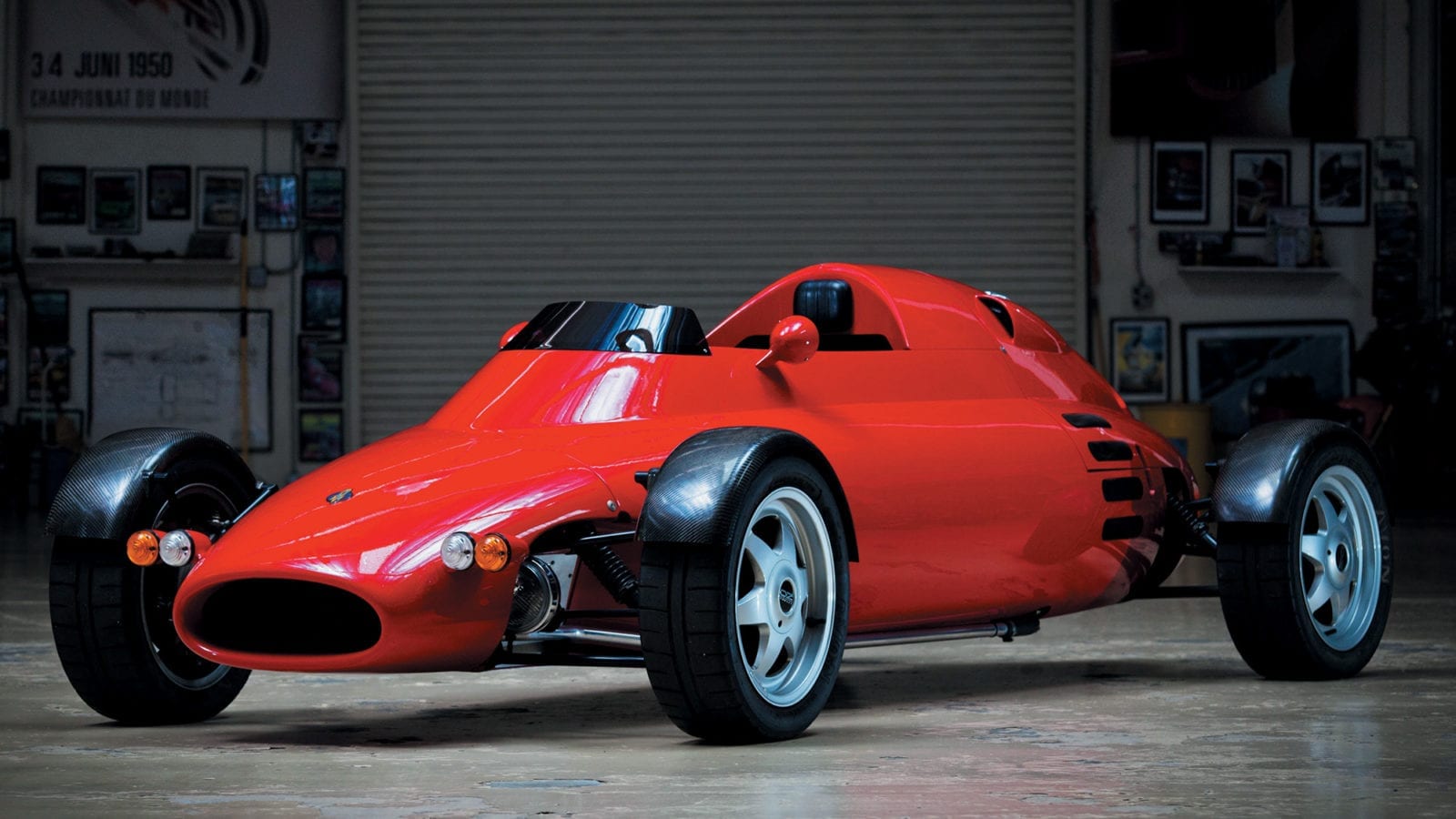Light Car Company Rocket: When perfection costs too much
Two men created the Rocket – the antidote to the supercar – but forgot to make it sellable, says Gordon Cruickshank

Agile flyweight Rocket could match Countach performance – but not its sales appeal
Maybe it seems odd to be investigating the previous Gordon Murray super-light sportster during the razzmatazz around his new superlight sportster. But in fact author Clive Neville tells us he originally wrote this book back in 2011, though various complications delayed it. He is also a Rocket owner, so has plenty of empathy.
It’s remarkable to realise that this tiny Cooper lookalike first appeared in 1992. At the time it was a shock – a motorbike engine, redline at a screaming 11,500 revs, tandem seating, five reverse gears. It was never going to be a mass-market car and those who chose to slide into its retro-styled carapace were never going to be conventional types. Nor were the two men behind the car – Murray’s co-conspirator was racing driver Chris Craft, who reckons the idea was sparked 50 years ago when he raced Murray’s De Cadenet sports car at Le Mans.
Neville’s book is in tune with the Murray philosophy, drilling down to the smallest detail with Murray and Craft’s sketches and drawings from the car’s genesis through to its production. If you appreciate technology, immerse yourself in fine detail of exhausts, transmission layouts and roll axes because it’s all here, laced with copious notes and memos between the principals about design aims. Indisputably comprehensive, though even the most dedicated technophile may feel there is more than enough about O-rings and cooling hoses. But if there is hardware overkill, there is also telling input from all the main players, particularly Chris Craft who shouldered the main development and production burden, and when the main build run came to an end restarted his own small production run.
Perhaps the takeaway memory he offers is that he thinks he lost £5000 on each of the 47 Rockets sold. The timing couldn’t have been worse – conceived in a time of excess, it hit the road just when people were cancelling their Jaguar XJ220 orders in another of our big recessions. Not only was it an oddball but it was seen as expensive compared to, say, a Caterham – and yet the price wasn’t high enough to make business sense. In the development chapters Neville seems almost in love with the car and its creator, but on the business aspect he is very frank about the flaws. Both Craft and his co-director son Luke admit there was no proper business plan, and that costings were almost guesswork. “It was never a business,” Craft laments. A salutary tale of a beautifully designed and engineered machine that appeared before niche marketing was a buzzword. But ironically the book could have been a bit slimmer and lighter…
 The Light Car Company Rocket
The Light Car Company Rocket
Clive Neville
Porter Press, £75
ISBN 9781913089146
 The Light Car Company Rocket
The Light Car Company Rocket 